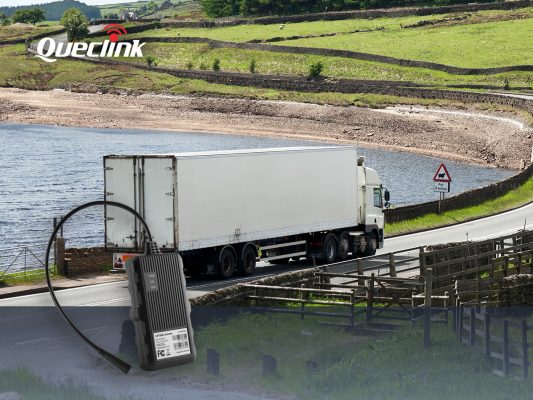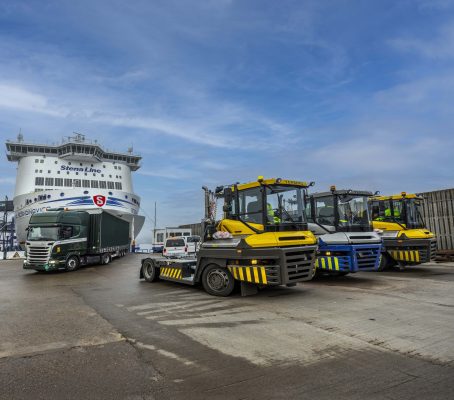For commercial fleets across the globe, transitioning to electric vehicles (EVs) is no longer in the realm of experimentation; it’s now a mission-critical priority, writes Gary Taylor, Vice President of Fleet Solutions in EMEA, Descartes
And with regulatory deadlines approaching and pressure from customers and stakeholders alike increasing, fleet operators have found themselves asking: ‘How is it possible to electrify responsibly, effectively, and sustainably?’.
While the benefits of EV adoption are clear, from lower emissions to potential long-term cost savings, the path to deployment is anything but straightforward. Gary Taylor, VP Sales EMEA at Descartes, believes that to achieve this, businesses require a level of operational granularity that many organisations have yet to fully appreciate and achieve. He explains further.
The EV transition is in its Infancy, but on the horizon
To truly understand the state of the EV transition, it is crucial to understand the market context. With the pace of electrification continuing to accelerate, particularly in the light commercial vehicle (LCV) sector, there has been an increase in LCV registrations across Europe by over 8% year-on-year according to ACEA, with the growth led by markets such as Spain, Germany, France, and Italy. And in the UK, electric models now account for 6.3% of new LCV registrations, up from just 1.2% in 2020. That represents a notable increase in recent years across the UK and Europe’s commercial landscape. Despite this growth, diesel remains the dominant fuel, still making up over 80% of the LCV market, underscoring that the transition is still in its early phases.
Meanwhile, the adoption of EV heavy goods vehicles (HGVs) has proven more challenging than experts may have originally expected. EVs currently make up just 0.5% of UK registrations, compared to 1.5% in mainland Europe. This uneven progress is being gradually influenced by regulatory shifts, particularly the increase in low-emission zones (areas where only vehicles that meet certain emissions standards are allowed to enter). Moreover, by the end of 2025, over 500 low-emission zones are expected to be active across Europe, many of which are being expanded or tightened in scope. These changes are piling the pressure on fleet operators to modernise.
Moving beyond the basics
A common misconception in fleet electrification is the belief that daily mileage is the primary indicator of EV suitability. However, this simply isn’t true. In reality, performance depends on a complex set of variables. In fact, topography, auxiliary loads, stop-start patterns, route variability, and even climate conditions all affect how much energy a vehicle, or fleet thereof, consumes.
For example, cold weather can reduce battery range by up to 20%. This may not impact businesses in the UK as much. Whereas for a fleet operator in the Nordics, it can get very cold – or Spain, where it can get very hot depending on the time of year, they may feel it more. However, it is still critical to consider. Not only this, but vehicles with heavy refrigeration units, heavy payloads, or routes that involve hilly terrain will use far more power. This is true even if their mileage is identical to vehicles on flatter, milder routes.
With this in mind, operators need more than just basic distance estimates. Tools that use historical data or synthetic journey profiles to model real-world EV feasibility could make a world of difference to fleet operators. These tools can also simulate state-of-charge fluctuations, which refer to the changes in the amount of energy stored in the battery over time. As well as factoring in terrain profiles, and assessments of how energy demand changes under different vehicle and environmental conditions. The result? A far more accurate picture of where and when EVs can be successfully deployed.
Overcoming infrastructure issues
EV infrastructure challenges continue to be a concern for many organisations. For instance, fleets where vehicles are on the road for 12 to 13 hours per day may be handed off between drivers – this has the potential to represent one of the most difficult electrification challenges for businesses. This is because the majority of public charging stations were designed with passenger cars in mind, not long-wheelbase vans or HGVs, meaning they aren’t a completely reliable source for fleet operators. Additionally, many commercial vehicles struggle to physically access many of these chargers due to tight layouts, incompatible plug locations, or height restrictions. Another key consideration for many: does the availability and speed of chargers align with a vehicle’s operational schedule? This can have a detrimental effect with fleet downtime potentially increasing and cost savings possibly eroding.
To overcome these challenges, route planning and optimisation tools can help fleets plan smarter by helping identify which depots are best suited for fast charging, evaluate whether en route top-up charging is feasible during deliveries, and model how to stagger charging sessions throughout the day to avoid peak grid demand. It’s also important to note that faster chargers aren’t always the magic bullet to fix a problem that people think. This is because most vehicles that operate long shifts only return to a depot for a brief period, which means the charger won’t physically be able to deliver sufficient charge to get it to its next destination – no matter how fast it is.
These operational nuances make planning critical. Just one wrong move could mean a lot of operational downtime and significantly impact a business’ profits – not to mention customer satisfaction. Furthermore, deliveries and the types of goods being delivered can be planned around the fleet available. Some goods might be better suited to EVs over internal combustion engine (ICE) vehicles, for example.
When is it appropriate to take vehicles home to charge?
Another consideration is that more and more companies across the UK allow drivers to take their vehicles home to charge if appropriate and if they have the charging infrastructure available. This is an excellent way for firms to tackle poor infrastructure issues, allowing drivers to charge their vehicles overnight at their houses. Anecdotally, a recent analysis of a fleet of over 1,400 vehicles found that more than 250 could immediately transition to EVs using home charging alone, assuming a nine-hour overnight window.
However, this approach requires identifying which vehicles can meet their operational needs with home charging and prioritising those for early adoption. For example, large vehicles like HGVs aren’t suitable for home charging, as most people can’t park them at home. The rest of the appropriate fleet can be transitioned later using mobile chargers, shared depot facilities, or adjusted shift schedules. Even without knowing drivers’ exact home addresses, modeling tools can estimate typical overnight charging patterns to help with planning.
Navigating the road to cost parity
While the cost of owning EVs continues to improve, parity with ICE vehicles remains highly context-dependent. Historically, consumer EV pricing typically drops two to three years ahead of commercial vehicle pricing. This is due to differences in economies of scale, duty cycles, and technical complexity. So, to determine when and where cost parity will occur, operators must consider several variables: leasing costs, infrastructure investment, charging time, and maintenance.
They must also account for groundworks – to install the technology, depot and home energy upgrades – to ensure the charging points function. They must also consider, in some cases, potentially long wait times for grid connections – often 12 to 18 months for Distribution Network Operator (DNO) requests.
Public, home, and depot charging have different cost implications that must be modelled over time too. However, with the right tools in place, organisations can test these scenarios and identify the tipping point where electrification becomes not just feasible, but financially advantageous to the business.
Conclusion
While electrification is complex, it is also increasingly achievable, especially when approached with the right kind of operational insight and strategic planning. Electrifying a fleet isn’t just about changing your vehicle. It requires a complete rethink about how vehicles are routed, charged, and managed. All of this highlights the importance of data-driven decision-making, realistic scenario modelling, phased implementation, and considering the types of routes that fleets will operate across. With the right tools in place, fleets can confidently identify the vehicles and routes most suited to electrification, develop targeted charging strategies, and build cost-effective infrastructure that supports real-world operations.



